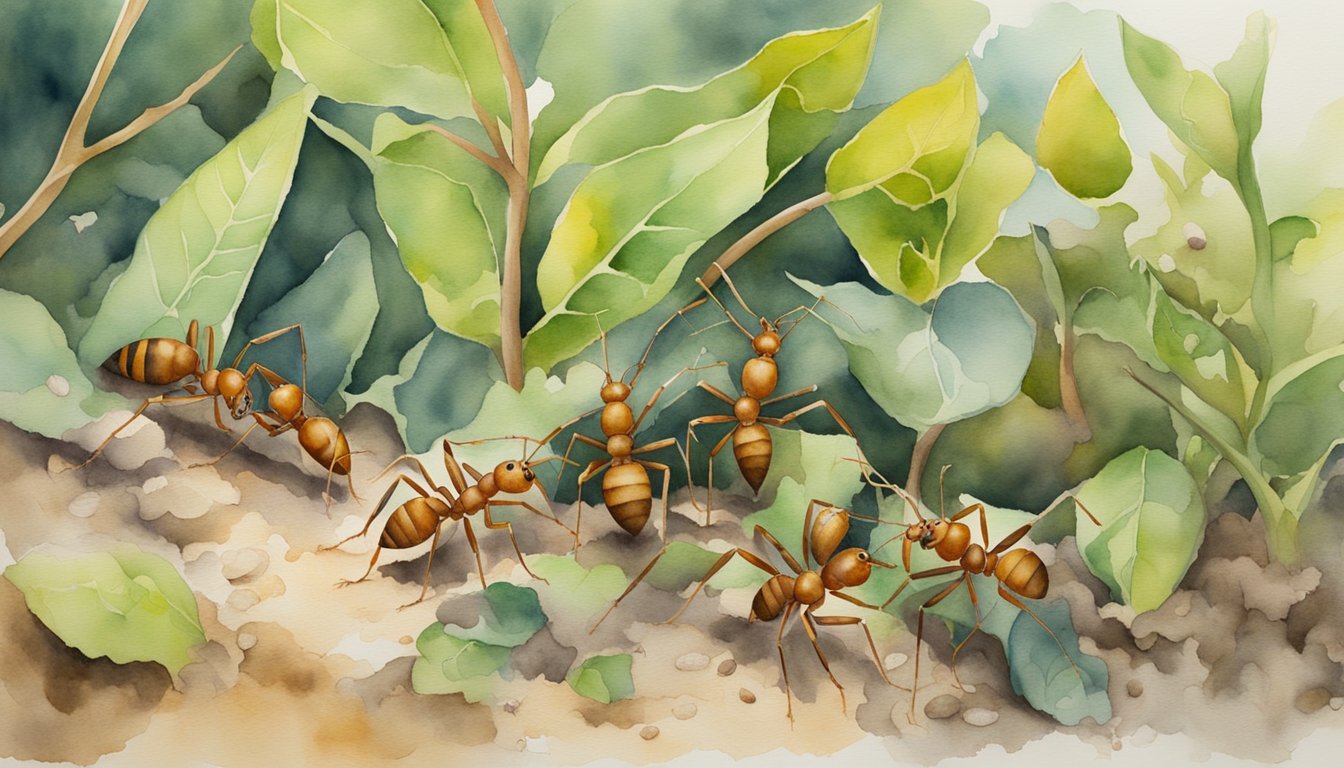Understanding Ants
Ants represent a highly evolved and diverse group of insects that play crucial roles in ecosystems around the globe. Their complexity is evident in their classification, anatomical structure, reproductive strategies, and intricate social hierarchies.
Classification and Species Diversity
Ants belong to the kingdom Animalia, in the phylum Arthropoda, class Insecta, and order Hymenoptera, which they share with wasps and bees. Specifically, ants are part of the family Formicidae. With over 12,000 ant species, some estimates suggest that the actual number could be much higher, potentially reaching over 20,000. The diversity ranges from agriculture caring red imported fire ants to structure-infesting carpenter ants.
Physical Characteristics and Anatomy
The body of an ant is divided into three main parts: the head, mesosoma, and gaster. The head houses complex antennae, which serve as sensory organs, and often, compound eyes with multiple lenses. Wings are present in certain ants, typically the reproductively active males and queens. Workers and soldiers, usually wingless, are more numerous within a colony.
Life Cycle and Reproduction
Ants undergo complete metamorphosis, progressing through distinct stages: egg, larva, pupa, and finally, into an adult. Males and queens have a sole role in reproduction. After a nuptial flight, queens shed their wings and establish new colonies where they lay eggs, perpetuating the life cycle of their species.
Social Structure and Roles
Ant communities are a textbook example of a complex social system with clearly defined roles. These roles include the egg-laying queen, male drones whose purpose is to mate with the queen, and sterile female workers and soldiers with duties ranging from foraging to colony defense. Some species, like army ants, are known for their aggressive collaborative hunting techniques.
Ant Behaviors and Interactions

Ant behaviors are complex and diverse, reflecting their ability to adapt to various environments. Interactions within ant colonies drive their highly cooperative societies, characterized by remarkable foraging strategies and nesting habits.
Diet and Foraging
Ants have a varied diet, often dictated by the species. For example, Formica workers commonly forage for food like nectar and small insects, while Leafcutter ants primarily feed on fungus they cultivate using leaves they have cut and transported back to their nests. Argentine ants are known for their aggressive foraging behavior and can outcompete native species for resources.
Colony Establishment and Nesting Habits
The process of colony establishment starts with a queen ant, who finds a suitable location, often in the soil, to lay eggs and begin a new colony. Species such as Camponotus create intricate nests in trees, while Solenopsis invicta, also known as the red imported fire ant, constructs mounds in open areas, which can lead to soil erosion.
Ants and Ecosystem Impact
Ant activities significantly impact the ecosystem. Their nesting behavior can aerate the soil and their relationship with aphids can affect plant health. Furthermore, ants disperse seeds, which contributes to plant biodiversity. Some species, like the honeybees, are vital pollinators, and ants can indirectly support this by protecting the plants that bees rely on.
Human and Ant Coexistence
Human and ant coexistence is not always harmonious as some species, like the Argentine ant, can infest homes in search of sweet substances. On the other hand, the presence of ants can be beneficial as they can help control pest populations, such as termites. Understanding their behavior and interactions allows for better management practices in urban and agricultural settings.

